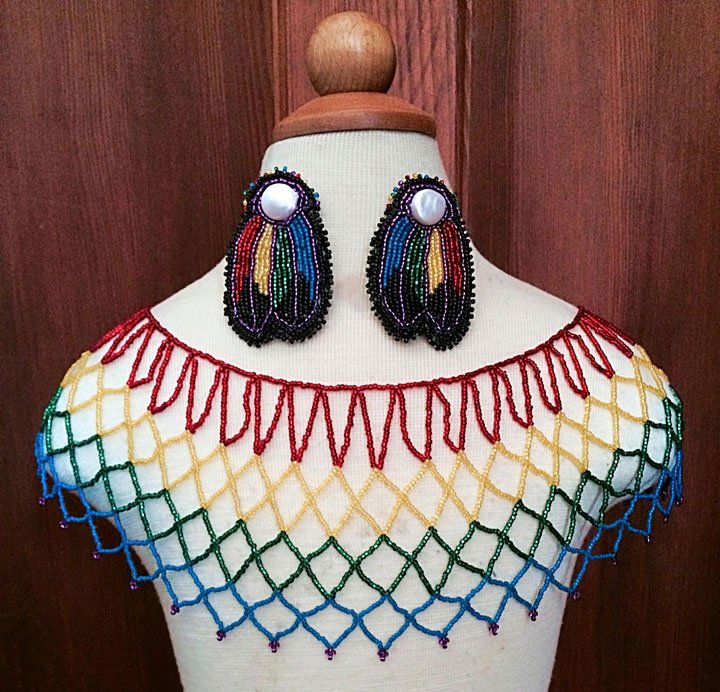The Artful Tradition of Native American Beadwork
by Rieka L. Rain Tree
Native American beadwork has been a lifelong tradition passed down through the women in my family for generations. As soon as my daughter was able to properly thread a needle and sit at a table without tipping over the beads, she too was indoctrinated into this unique method of cultural expression. It takes a calm mind, good spirit, steady hand and sometimes a quality magnifying glass to create the intricate patterns the world has come to recognize as North American Indian beadwork.
Before beadwork, we had basketry, a tradition that was lost to many due to relocation and the loss of indigenous plant life. Without access to what we needed for basketry, we discovered the beauty of beads. Brought to us by the French, those tiny, colorful beads became the perfect replacement for basket supplies. Redbud was replaced with red beads. White sedge was replaced with white beads and white thread, and so on. Some of the most popular designs for beaded earrings and medallions come from our basketry. We simply scaled down the designs and beaded them in technicolor onto animal hides like buckskin or leather.
The beads themselves are chosen with care. Every color conducts its own energy. Each individual bead is carefully chosen. If a bead is cut too large, too small or is misshapen, it changes the look of the entire beaded piece. I was taught that if I unsuccessfully attempt to pick up a bead four times with my needle, I should move on, because that bead doesn’t want to go into the work. If I accidentally tacked down a bead in the wrong location or in the wrong color, I was encouraged to let it be, because it was the spirit bead. We didn’t want a piece to be too perfect, otherwise the spirits couldn’t get out. The piece needs to “breathe”. These simple tips weren’t just important for beadwork, they were important life lessons.
Beading with my elders taught me patience, not to force things to happen. Like a bead that won’t go on a needle, sometimes it’s best to let go and let things be. Accepting the flaws in my own beadwork is how I was taught to accept my own flaws. Mistakes are what make me unique and beautiful in my own way. And if that flaw caused me to be overlooked by some, it was because I was meant for someone else.
Now I pass the tradition of beadwork down to my own daughter. I encourage individuality in her designs so that she can hold on tight to her traditional heritage while expressing her uniqueness. Her style plants the seeds of new traditions that she will someday cultivate and pass down to her own grandchildren. Like my grandmother, my daughter and I will someday become elders. We too will be living libraries and museums of cultural heritage, leaving behind our beadwork as small, artful roadmaps to our tribal traditions and history.
Rieka has been a bead worker for over 20 years and is currently the Director of Tribal Affairs for Seeds of Sovereignty. Find Rieka's yarnwork on IG @theoriginalraintreeboutique and on FB at @TheOriginalRainTreeBoutique.
OPINION DISCLAIMER: Any views or opinions stated in the NAAFA Community Voices Blog are personal and belong solely to the blog author. They do not represent the views or opinions of NAAFA or the people, institutions or organizations that the owner may or may not be associated with in professional or personal capacity, unless explicitly stated. Any views or opinions are not intended to malign any religion, ethnic group, club, organization, company, or individual.


